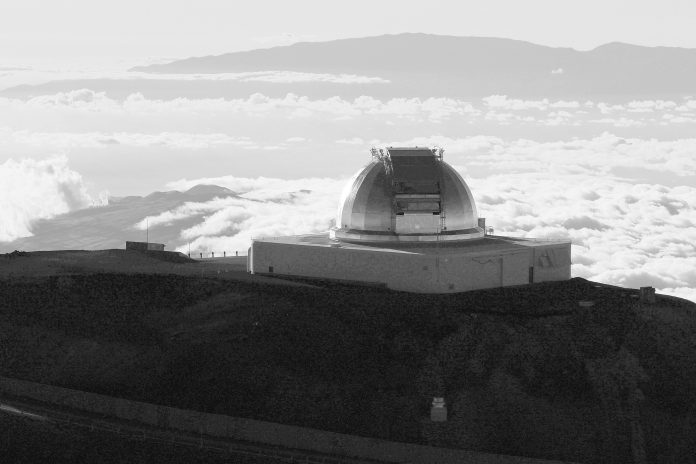
Is there life on planets outside our solar system? How did stars and galaxies form in the earliest years of the universe? How do black holes shape galaxies?
Scientists are expected to explore those and other fundamental questions about the universe when they peer deep into the night sky using a new telescope planned for the summit of Hawaii’s tallest mountain.
But the Thirty Meter Telescope is a decade away from being built. And Native Hawaiian protesters have tried to thwart the start of construction by blocking a road to the mountain. They say installing yet another observatory on Mauna Kea’s peak would further defile a place they consider sacred.
Activists have fought the $1.4 billion telescope but the state Supreme Court has ruled it can be built. The latest protests could be the final stand against it.
Here’s a look at the telescope project and some of the science it’s expected to produce.
WHY WOULD THE TELESCOPE BE MORE POWERFUL?
The large size of the telescope’s mirror means it would collect more light, allowing it to see faint, far-away objects such as stars and galaxies dating back as long as 13 billion years.
The telescope gets its name from the size of the mirror, which will be 30 meters (98 feet) in diameter. That’s three times as wide as the world’s largest existing visible-light telescope.
Adaptive optics would correct the blurring effects of the Earth’s atmosphere.
The telescope would be more than 200 times more sensitive than current telescopes and able to resolve objects 12 times better than the Hubble Space Telescope, said Christophe Dumas, head of operations for the Thirty Meter Telescope.
WHAT RESEARCH WOULD THE TELESCOPE DO?
— Distant planets. During the past 20 years, astronomers have discovered it is common for planets to orbit other stars in the universe. But they don’t know much about what those planets — called extrasolar planets or exoplanets — are like. The new telescope would allow scientists to determine whether their atmospheres contain water vapor or methane which might indicate the presence of life.
“For the first time in history we will be capable of detecting extraterrestrial life,” Dumas said.
Dumas said the new telescope would use special optics to suppress the light of stars. He compared the technique to blocking a bright street light in the distance with your thumb then seeing insects circling in the fainter light below.
— Black holes. Black holes at the center of most galaxies are so dense that nothing, not even light, can escape their gravitational pull.
Andrea Ghez, a University of California, Los Angeles physics and astronomy professor who discovered our galaxy’s black hole, said scientists believe black holes play a fundamental role in how galaxies are formed and evolve.
But so far astronomers have only been able to observe this dynamic in detail in the Milky Way because the next galaxy is 100 times farther away.
The Thirty Meter Telescope would enable scientists to study more galaxies and more black holes in greater detail.
It may also help them understand gravity. Those who doubt the importance should note that GPS-enabled maps on cellphones rely on Einstein’s theories about gravity.
“We think of these things as esoteric. But in fact, in the long run, they have profound impacts on our lives,” Ghez said.
—Dark matter and dark energy. Humans see only about 4 percent of all matter in the universe, Dumas said. Dark energy makes up about three-quarters and dark matter the rest. Neither can be seen.
“We have no idea what dark matter is and no idea what dark energy is. That’s a big dilemma in today’s world,” Dumas said.
Because mass deforms space and light, Dumas said the new telescope would make it possible to measure how dark matter influences light.
It could do this by studying light from far-away galaxies. The light would take different paths to the telescope, generating different images of the same object.
WHY MAUNA KEA?
The weather at the summit of Mauna Kea tends to be ideal for viewing the skies. At nearly 14,000 feet, its peak is normally above the clouds. Being surrounded by the ocean means air flows tend to be smoother and it has the driest atmosphere of any of the candidate sites.
The mountain is already home to 13 other telescopes.
Ghez used the Keck Observatory there to find our galaxy’s black hole. Other discoveries credited to those sites over the years include the first images of exoplanets and the detection of ‘Oumuamua, the first object from interstellar space, which turned out to be a comet from a distant star system.
NEXT GENERATION TELESCOPES
Two other giant telescopes are being built in Chile, which also has excellent conditions for astronomy.
The European Extremely Large Telescope will have a primary mirror measuring 39 meters, or 128 feet, in diameter. The Giant Magellan Telescope’s mirror will be 24.5 meters, or 80 feet, in diameter.
The Thirty Meter Telescope is the only one expected to be built in the Northern Hemisphere. Because different spots on Earth look out on different parts of the sky, the next-generation ground telescopes will ensure scientists are able to see the entire universe.
The universities and national observatories behind the Thirty Meter Telescope have selected Spain’s Canary Islands as a backup site in case they are unable to build in Hawaii.q















